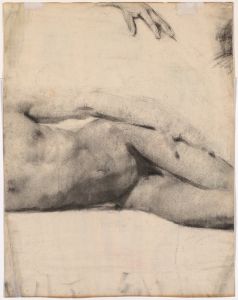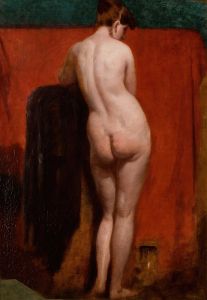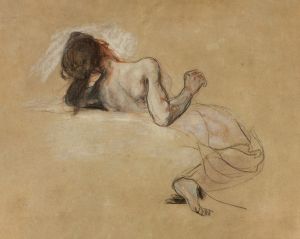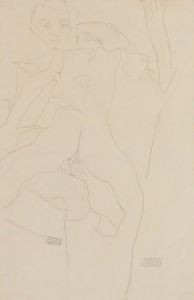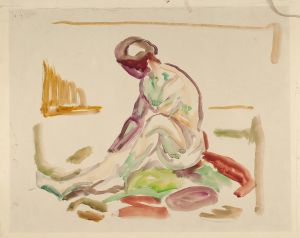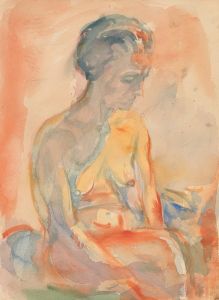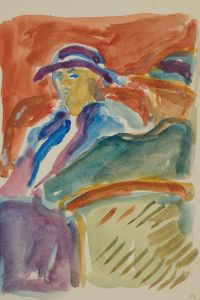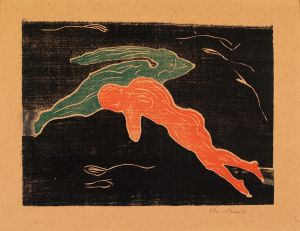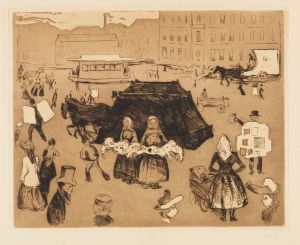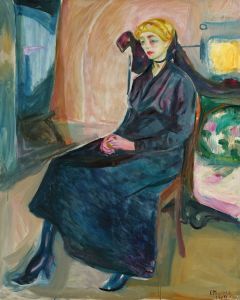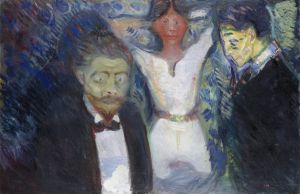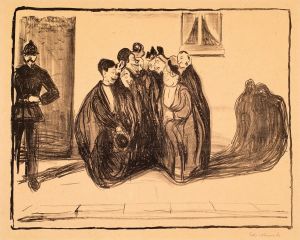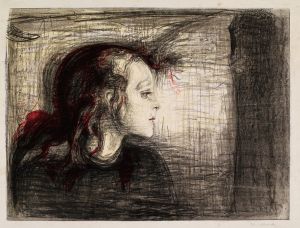
Naked Figures
A hand-painted replica of Edvard Munch’s masterpiece Naked Figures, meticulously crafted by professional artists to capture the true essence of the original. Each piece is created with museum-quality canvas and rare mineral pigments, carefully painted by experienced artists with delicate brushstrokes and rich, layered colors to perfectly recreate the texture of the original artwork. Unlike machine-printed reproductions, this hand-painted version brings the painting to life, infused with the artist’s emotions and skill in every stroke. Whether for personal collection or home decoration, it instantly elevates the artistic atmosphere of any space.
Naked Figures is a painting by the renowned Norwegian artist Edvard Munch, who is best known for his iconic work "The Scream." Munch was a pivotal figure in the Symbolist movement and a precursor to Expressionism, and his works often explore themes of existential angst, love, and death.
Naked Figures, created in 1909, is one of Munch's many works that delve into the human condition and the complexities of human emotions. The painting features a group of nude figures, which is a recurring subject in Munch's oeuvre. His use of the nude form often serves to strip away societal conventions and expose the raw, unfiltered human experience.
The composition of Naked Figures is notable for its dynamic arrangement and the interplay of light and shadow. Munch's brushwork in this piece is expressive, with bold strokes that convey a sense of movement and emotional intensity. The figures are rendered with a certain degree of abstraction, which is characteristic of Munch's later style, where he moved away from the more detailed realism of his earlier works.
Munch's use of color in Naked Figures is also significant. The palette is relatively muted, with earthy tones that enhance the naturalism of the scene while also contributing to the overall mood of the painting. The background is kept simple, ensuring that the focus remains on the figures and their interactions.
Thematically, Naked Figures can be seen as part of Munch's ongoing exploration of human vulnerability and intimacy. The lack of clothing on the figures removes any social or cultural identifiers, allowing the viewer to focus on the universal aspects of the human experience. This approach is consistent with Munch's broader artistic goals, which often involved delving into the psychological and emotional states of his subjects.
Munch's work, including Naked Figures, was influenced by his own life experiences and the psychological theories of his time. He was deeply affected by the deaths of his mother and sister during his childhood, and these events left a lasting impact on his worldview and artistic output. His interest in the inner workings of the human mind was also shaped by his exposure to the writings of Sigmund Freud and other contemporary thinkers.
Naked Figures is housed in the Munch Museum in Oslo, Norway, which holds the largest collection of Munch's works. The museum provides valuable context for understanding Munch's artistic development and the various phases of his career. Naked Figures is an important piece within this collection, offering insight into Munch's approach to the human form and his ongoing quest to capture the essence of human existence.
In summary, Naked Figures by Edvard Munch is a significant work that exemplifies the artist's exploration of human vulnerability and emotional depth. Through its expressive brushwork, muted color palette, and dynamic composition, the painting invites viewers to contemplate the complexities of the human condition.





